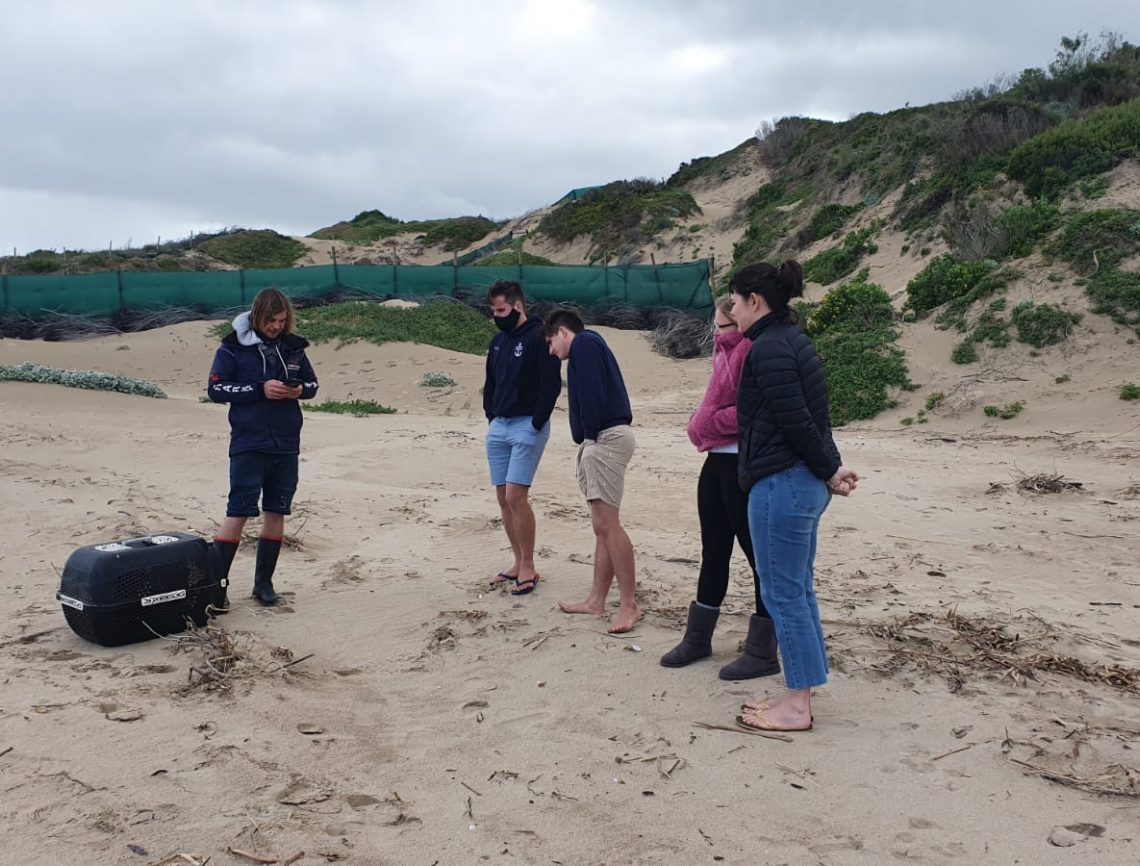RiverWise
Issue 26 ~ September 2020
The monthly newsletter of the Lower Breede River Conservancy Trust
Have you renewed your
boat licence yet?
Annual Municipal Boat licences are due for renewal every year from 1 July and valid until 30 June the following year.
Just a reminder of our outlets available for boat licence sales for 2020/2021
MALGAS OUTLET:
Living the Breede
Phone: 067 162 9081 or 082 324 2757
Open: Mon-Sun from 08h00 - 17h00
RIVERINE OUTLET:
Breede Riverine Estate
Phone: 028 542 1345
Open: 09h00 – 17h00
WITSAND OUTLETS:
Lower Breede River Conservancy Office
Sands Supermarket
Nella's se Winkel
SWELLENDAM OUTLET:
Heyneman Yamaha
Phone: 028 514 2010
Open: 8h00 – 17h00
ONLINE LICENCES:
Buy your boat licence online and arrange to pick up your disk at Living the Breede (Malgas) or LBRCT office (Witsand)
https://breede-river.org/licences/
Contact our office if you have any questions regarding the boat licences - 028 537 1296 / info@breede-river.com
What we have been up to
In this issue
This issue covers our activities for September 2020. We start off with the highlights of what we have been up to during the month. We have an interesting follow up article on how ocean noise pollution affects marine animals. Our plant focus for this month is Palmiet. This plant is very important to our river systems. We end off with a summary of our bird count for the month.
Subantarctic fur seal rescue
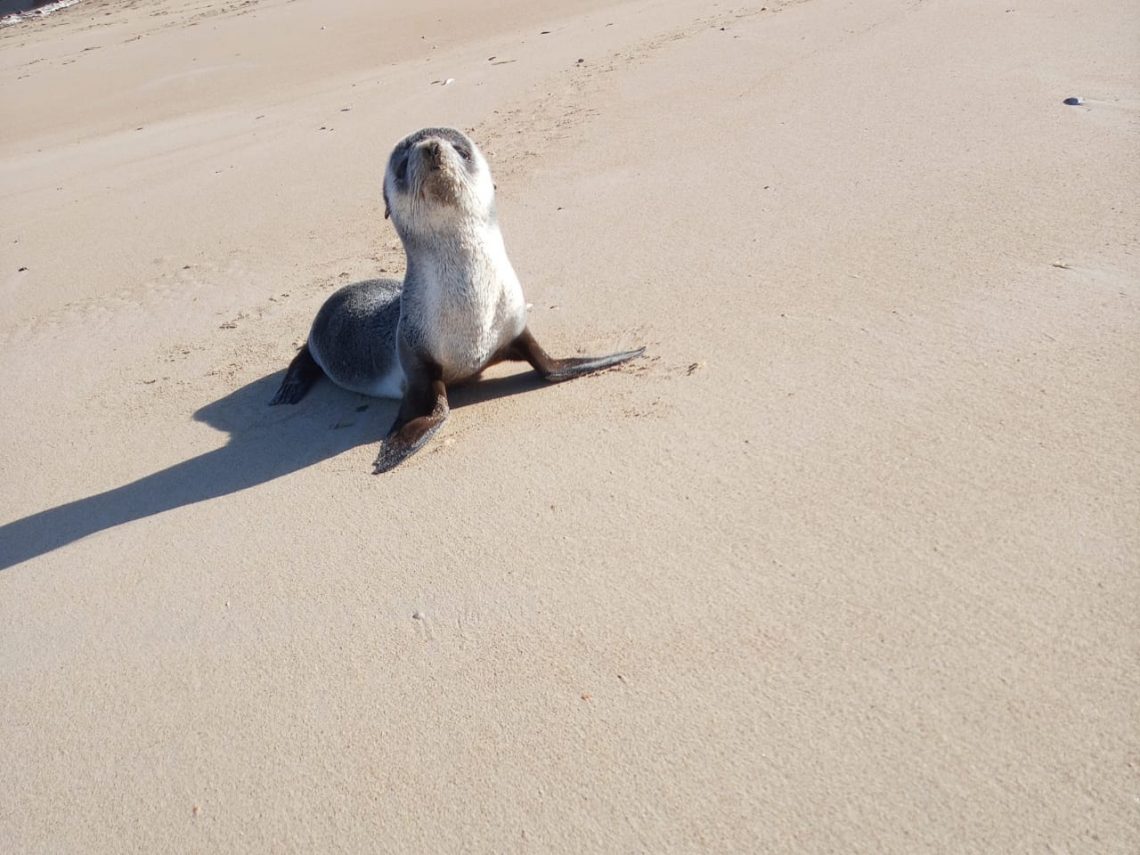
A Subantarctic fur seal, possibly between 8 months to a year old was spotted on the main beach in Witsand and reported to the LBRCT. After observation it was found that the seal was weak and underfed. Normally when they look strong enough and won't get disturbed, they can be left and will find their own way. A special thank you to Wilfred Chivell and the Dyer Island Conservation Trust team for collecting the little guy. He was named Sebastian. He is currently in observation and as soon as he is strong enough he will be released again.
Assisting with DEFF visit
During the first weekend of the month, we assisted the Fisheries officials from Mosselbay and SAPS in a two day operation aimed at enforcement of Marine Living Resource Act regulations in the Breede Estuary and along the adjacent coast. We assisted with logistic support. A number of transgressions were identified and fines were issued. Hopefully these will progress successfully through the legal system. We also got some time to discuss system-specific pain points and initiate planning for future operations.
Marking more hazard areas in the river
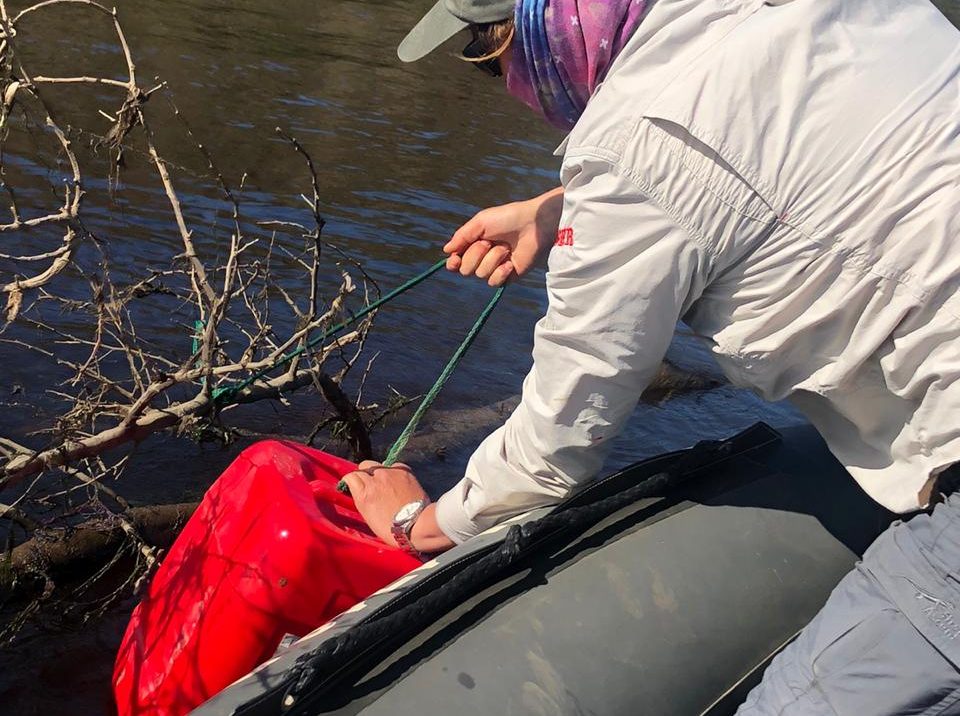
During the month, our rangers marked some more submerged tree stumps with red drums as a safety precaution. This picture was taken at Ward 1. Please drive with caution on the river. A big thank you to those that reported sightings of these hazard areas.
Assisting with DEA&DP water monitoring
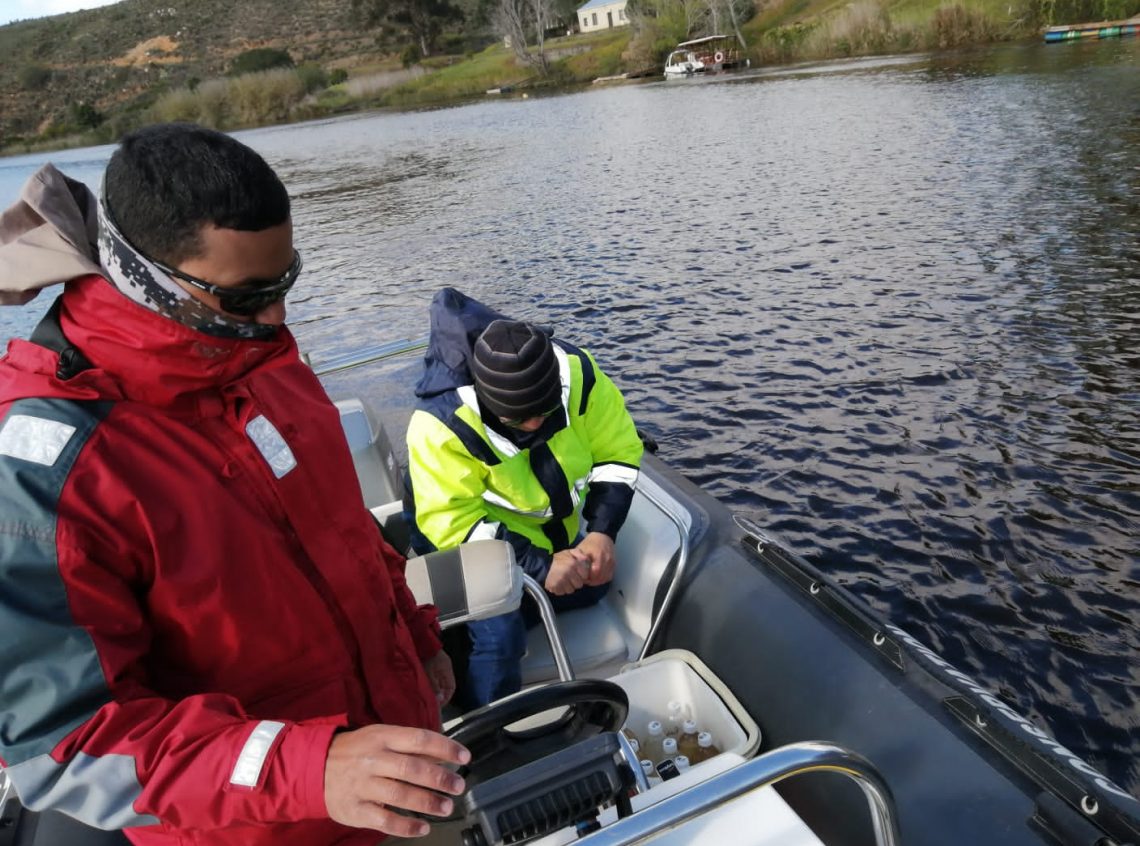
Our ranger assisted DEA&DP with their monthly water sampling visit where they record enviromental parameters and E-coli. We are glad to be involved in this project to help monitor the health of the estuary.
International Coastal Clean-Up
This year international Coastal Clean Up Day was on the 19th of September. We arranged two events, one on Friday the 18th for Witsand and Saturday the 19th for Infanta. We want to thank each and everyone that took time to join in these events. We hope to do an even bigger event next year.
A big thank you to our sponsors that contributed to a couple of lucky draws for the International Coastal Clean-up events. We always appreciate your support! The sponsers were Pick and Pay, PiliPili Witsand and Grunters Malgas.
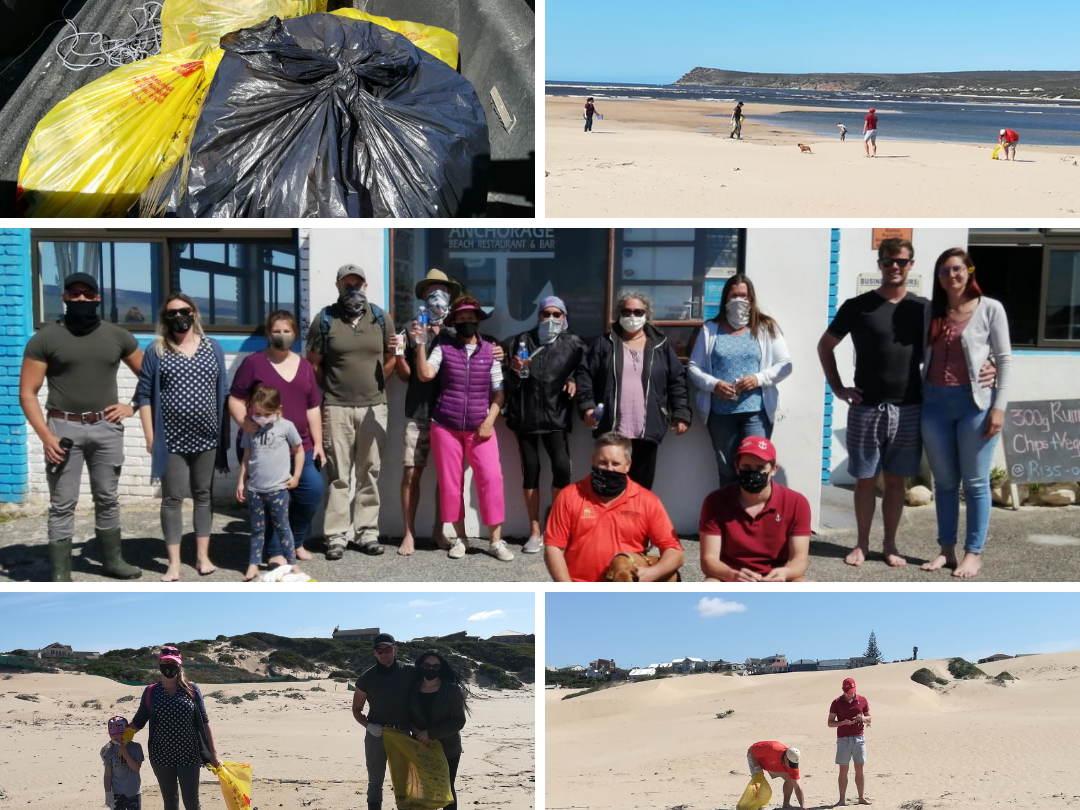
For Witsand a total 21.7kg of trash was picked up. We had 16 adults and one child participate.

We had a couple of groups involved at Infanta, and together they collected 105kg of trash. Thank you to the residents from Kontiki, Malgas and Infanta that joined on Saturday. We even had a group of Grade 7 pupils from Applewood Primary School, that made time on their hiking trip to do a clean-up, and Miss Pre-Teen South Africa joined as one of her environmental involvement tasks.
An interesting sighting
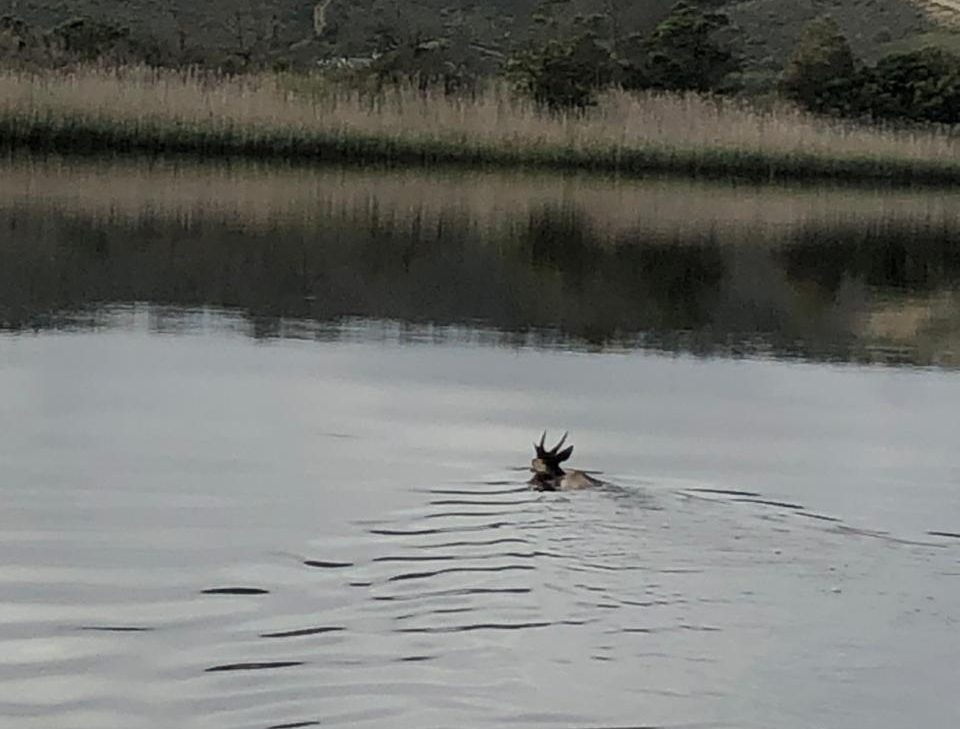
Ever heard the expression "Why did the Eland cross the river?" Well neither did we, until this particular morning.
One of our Rangers experienced something extraordinary. An Eland came out of the reeds and swam over the river. We suspect he got a little fright from something. He made it safely to the other side.
Photo credit: Adri Claasen.
Videoclip available on our Facebook, Instagram and Twitter accounts.
Deafening the Song of Life
The potential impact of noise pollution in the aquatic environment Part 2
The sensory environment plays a critical role for a variety of aquatic species as sound is used for a variety of functions. These include communication, reproduction, intra (within) and inter (between) species interactions as well as predator-prey interactions (Sluijs et al. 2010). In water, sound travels five times faster and weakens less over the same distance in air. This means long-distance communication is possible underwater. However, noise can have a long-distance impact on aquatic animals (Slabbekoorn et al. 2010).
Man-made noise produced by boats/ships, sonar, construction, and exploitation of offshore platforms (Slabbekoorn et al. 2010) has the potential to impact the behaviour and physiology of individual animals. The frequency range of this man-made noise can overlap with the vocalisation and hearing range of aquatic organisms (Popper and Hastings 2009, Slabbekoorn et al. 2010). Impacting the communication ability between species should negatively influence species diversity. Marine noise will impact species in a different way.
Invertebrates can be affected by noise pollution. Bivalves and crustaceans can retract or hide due to this noise and this would decrease their ability to feed effectively and negatively impact the food available to their predators (Sabet et al. 2016).
Fish primarily produce sound with their swimbladder. There are special muscles (sonic muscles) that vibrate on the swim bladder which produce the sound (Laditch and Fine 2006). The sounds produced are typically in the low frequency range (<1000 Hz). The physiology of sonic muscles and the acoustic properties of the swimbladder differs in each species and this allows for different sounds to be produced (Amorim 2006). Fishes have sensitive auditory organs and use sound for communication during territorial defence, aggression, mating and as a way of indicating alarm (Popper and Hastings 2009, Sebastianutto et al. 2011).
Fish can be impacted in a variety of ways by noise pollution. The type, frequency, duration of exposure, degree of overlap of sound frequency spectrum and distance to noise source impacts species (Popper and Hasting 2009, Slabbekoorn et al. 2010, Sluijs et al. 2010). Different species will react differently to noise pollution. Short-term exposure elicits a stress response in certain fish species, long-term exposure could potentially affect egg survival and growth rates. Stress has been recorded in Gilthead seabream due to exposure to vessel noise (Celi et al. 2006).
Different engine types can affect species in different ways (McCorck et al. 2019). It has been shown that 2-stroke engines affect the ability of the settlement-stage fish to learn to identify predators. This leads to a 70% decrease in survival over a 72 hour period (Ferrari et al. 2009).
Noise has also been shown to affect the ability of the larvae of reef-associated fish. It can potentially impact the ability of these species to settle on their reef habitat (Holles et al. 2013). At the end of the larval phase when reef fish are particularly vulnerable to predation, noise could effect the ability of fish to assess risks and make choices regarding anti-predator behaviour (Almany et al. 2006), Simpson et al. 2016).
This underwater noise has also shown to affect some species in their foraging efficiency and were shown to attack prey less effectively (Sabet et al. 2016).
Man-made noise from fishing vessels has been shown to affect the distribution of fish, with horizontal and vertical movements of Atlantic herring (Vabǿ et al. 2002) and Atlantic Cod (Handegard et al. 2003) away from vessels being recorded. Blue-fin tuna schools broke down in the presence of boat noise (Sara et al. 2009).
Potential impacts include masking courtship sounds over long-distance during mate attraction (Smott et al. 2018). Even short -term exposure could negatively affect species in the breeding season. Pomacentrids (damselfish and clownfish family) use sounds at close range during courtship with females preferring a lower frequency as this indicates a larger body size (Myrberg et al. 1978) and masking of these sounds could have dire consequences for the breeding season.
Different engine types can affect species in different way. It has been shown that 2-stroke engines affect the ability of the settlement-stage fish to learn to identify predators. This leads to a 70% decrease in survival over 72h (Ferrari et al. 2009).
Brown meagre (Same family as Dusky Kob) in the Venice lagoon, use vocalisations for reproductive calls, which results in spawning aggregations and noise levels seen in this lagoon can mask this communication. This would affect the reproductive success of this species (Bolgan et al. 2016).
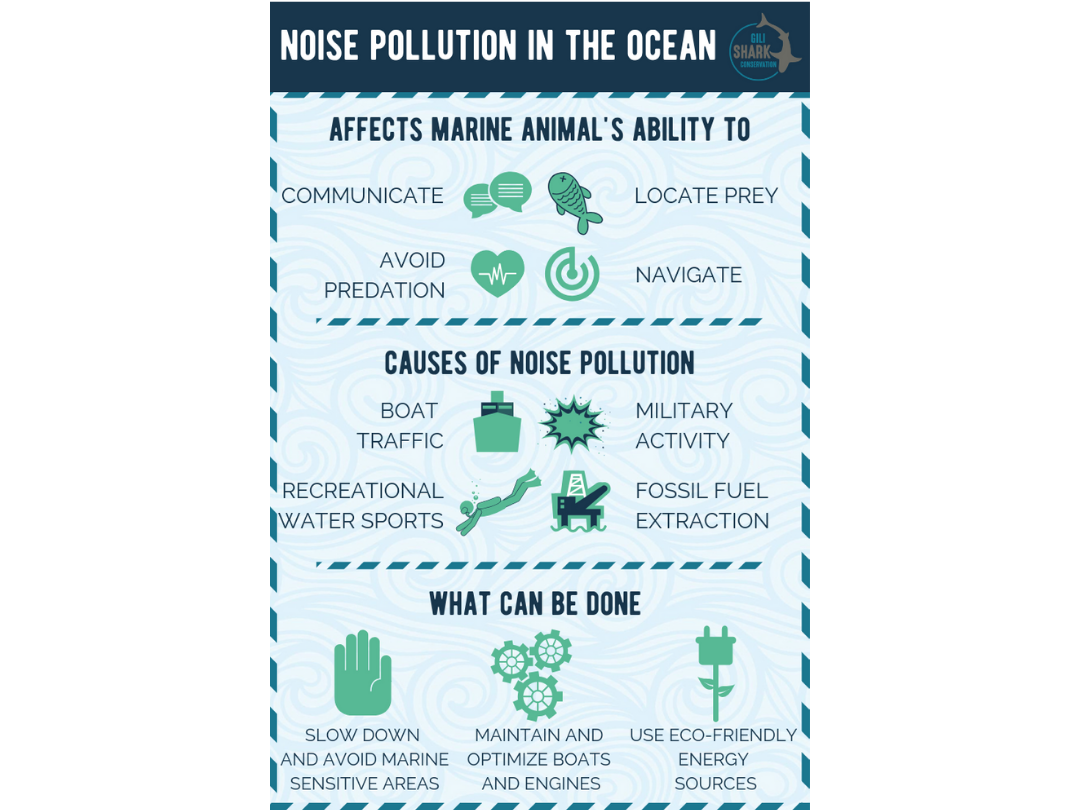
Plant focus
Palmiet
(Prionium serratum)
The focus of this month’s plant is Palmiet. This robust plant is an evergreen and semi aquatic shrub. They can grow up to 2m high. The leaves are stiff, leathery, and pale grey-green with toothed edges. These leaves can be up to 1.2m long and 30-40mm wide. The scientific name Prionium serratum refers to the saw-like toothed edges of the leaves. The brown flowers of the Palmiet are seen in spring and summer between September and February.
A South African endemic, it is only found from the Western Cape to southern KwaZulu-Natal. Its distributional range is limited to the Table Mountain and Natal Group sandstones. This substrate is extremely nutrient poor.
Within its distributional range, it is found in marshy areas, streams, rivers and riverbanks in large dense stands. Palmiet is an important plant to river ecology in the Western Cape as it acts as an ecosystem engineer.
They stabilise riverbeds and banks which reduces erosion. Palmiet stands slow river flow and create wetlands in the process. This allows other plant species to colonize these areas by creating suitable habitat. Slowing of the water also allows alluvial deposits to accumulate in the dense clumps which filters the water. The strong roots, which can reach 5m deep, stop the plant from being ripped out by heavy floods. Species diversity is rich and varied in Palmiet stands as it provides microhabitat for insects, fish and birds where they can feed and breed.
Threats for this species include channel erosion, land-cover alteration by converting wetlands into agricultural land, pollution from agricultural runoff and alien vegetation. These threats often impact the Palmiet stands together.
They are listed as least concern by the International Union for the Conservation of Nature (IUCN), but the unique ecosystems that are created by this plant are becoming rarer.
Sources
Boucher C and Withers M: Palmiet Prionium serratum a Cape River Plant.Rebelo AJ, Emsens WJ, Meire P, Esler KJ. 2018. The impact of anthropogenically induced degradationon the vegetation and biochemistry of South African palmiet wetlands. Wetlands Ecology and Management26: 1157-1171.
http://www.biodiversityexplorer.info/plants/thurniaceae/prionium_serratum.
htmhttps://www.farmersweekly.co.za/agri-technology/farming-for-tomorrow/palmiet-wetland-conservation/http://pza.sanbi.org/prionium-serratum
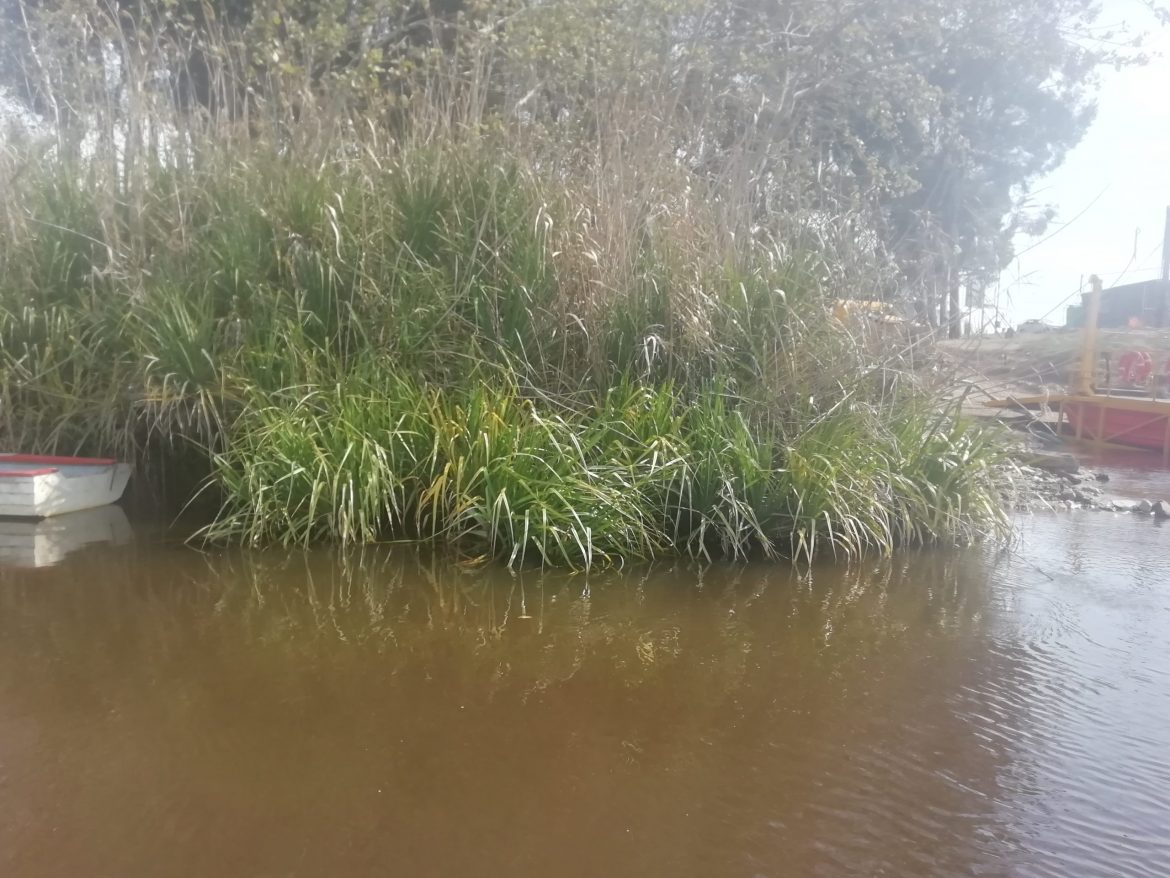
In the data
Monthly routine monitoring
September bird count
For many bird species, Spring has indeed sprung with a larger variety of species seen in September (31 species) compared to last month (27). With the warmer weather experienced, the breeding season for many specie has now started.
Of the 989 birds seen, Southern Red Bishops accounted for 66.4% of all birds seen. The adult males, now in their brightly coloured and conspicuous red breeding plumage, were seen building nests and displaying. Other nest building species seen in the reeds were Cape Weaver and Southern Masked Weaver.
The highest bird count was recorded in zone 3B, which ranges from Bush Pub to Kemp, with 234 birds and zone 4A (Boat House to Clive Tandy) with 240 birds. This was primarily due to the high number of Southern Red Bishops seen.Other species that round up the top five species seen are Egyptian Goose (60 birds), Spur-winged Goose (35 birds), Yellow-billed duck (32 birds) and Kelp Gull (27 birds). Relatively high numbers of the Spur-winged Goose were seen. This common resident is a nomadic species at wetlands and their numbers vary greatly throughout the year.
The first spring arrival of a Palearctic breeding migrant was seen. Common-ringed Plovers start arriving in southern Africa in September and are common on habitats that contain soft, fine mud like the extensive mudflats seen along the Breede.
Other interesting birds seen during the survey include: Black-crowned night Heron, Cape Shoveller (a southern African near-endemic), Lesser Swamp Warbler (a common, but secretive reed beds dwelling bird) and Water Thickknee (local nomad along rivers, lake shores and estuaries).
The highest species diversity during the survey were recorded in zone 1C, Groenpunt to Powerlines, with 14 species and zone 2A, Powerlines to White house, with 16 species.
Thank you for reading
We hope you enjoyed this months' issue. Should you have any feedback, questions, or matters you would like us to cover in a future issue, please do not hesitate to write to us at news@breede-river.org.
